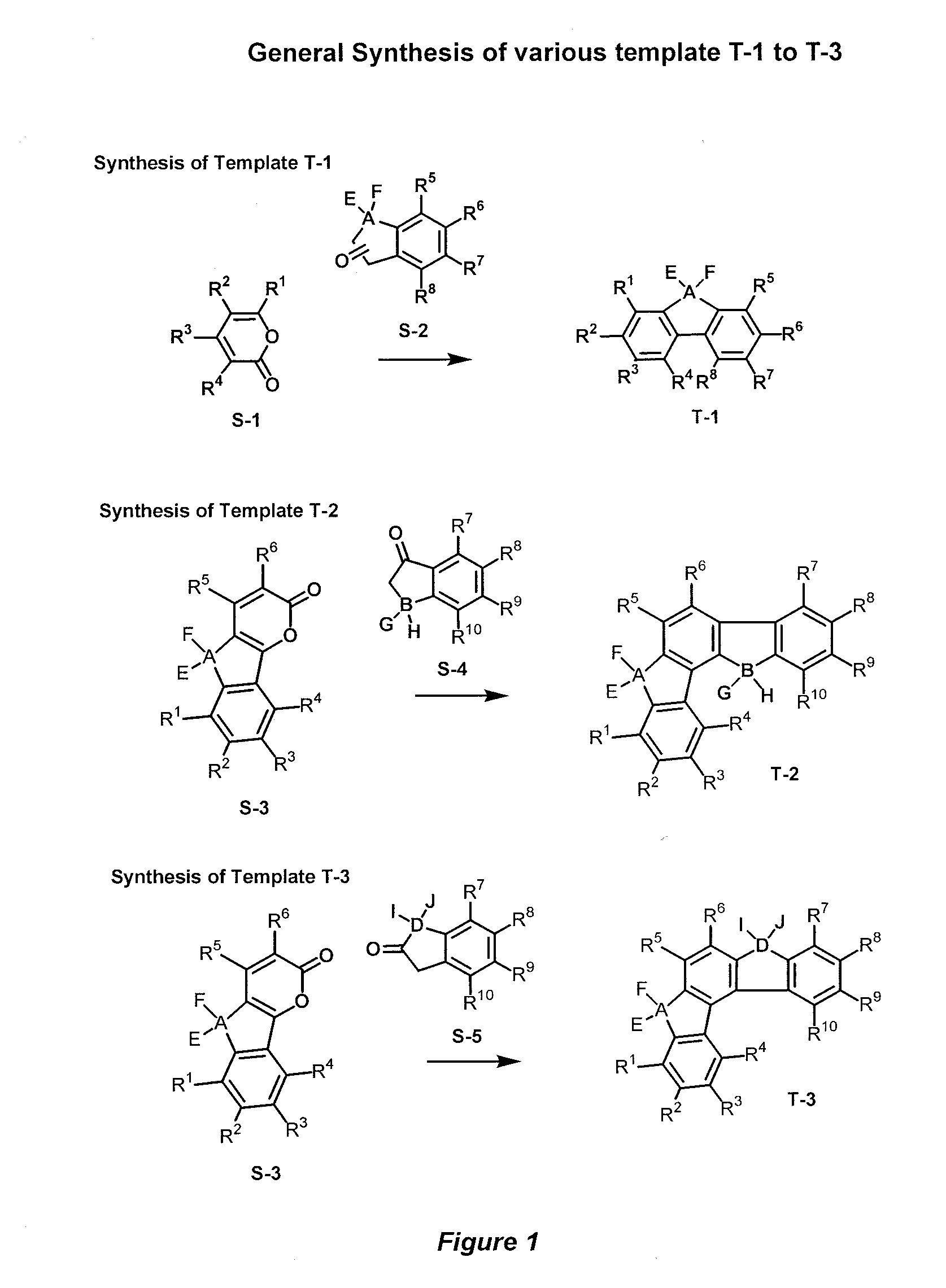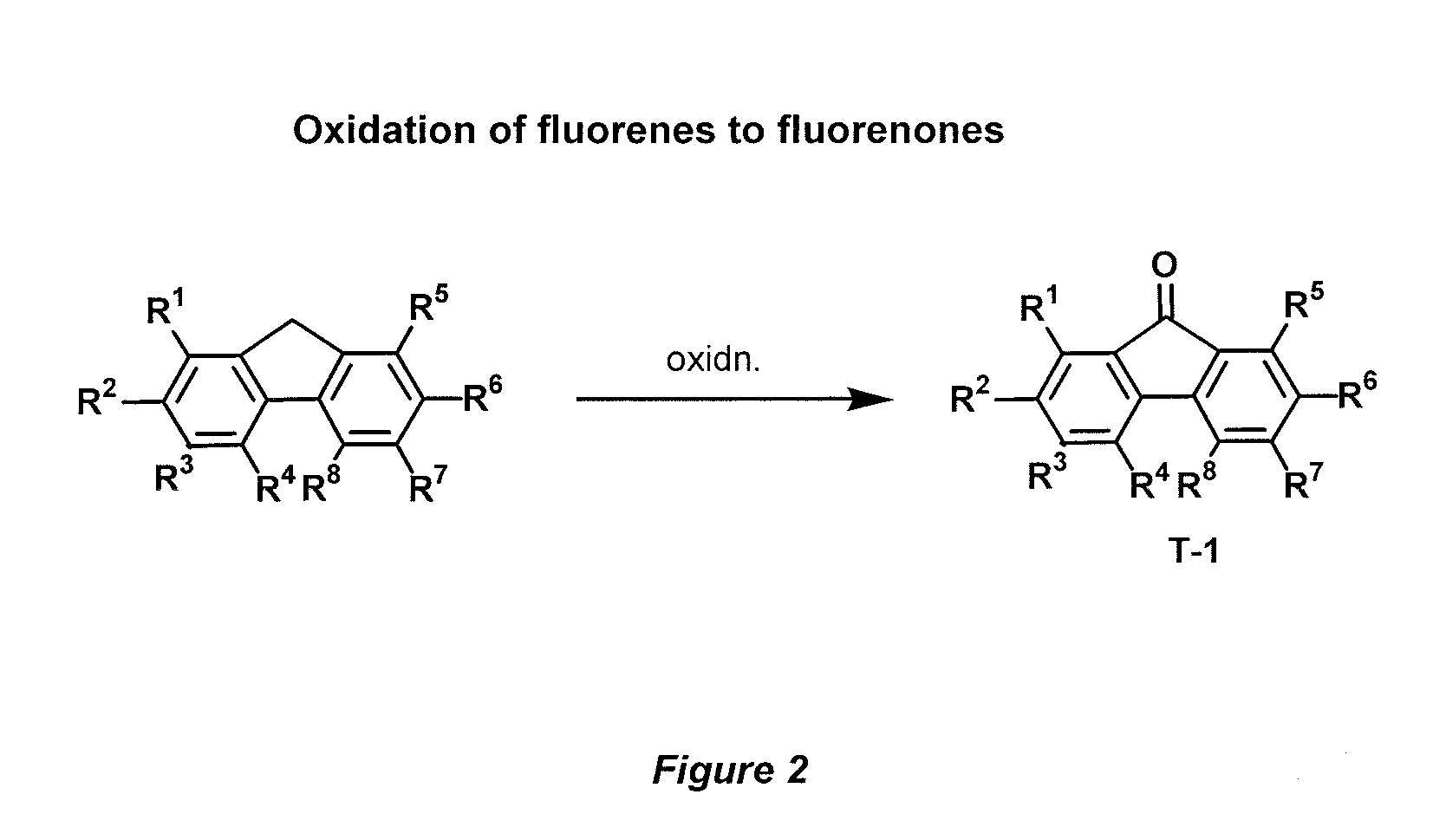Novel donor-acceptor fluorene scaffolds: a process and uses thereof
- Summary
- Abstract
- Description
- Claims
- Application Information
AI Technical Summary
Benefits of technology
Problems solved by technology
Method used
Image
Examples
Embodiment Construction
[0054]Accordingly, the present invention provides a novel donor-acceptor fluorenes, fluorenones and their π-conjugated scaffolds having the general formula I, and derivatives thereof
Wherein R1, R2, R3, R4, R5, R6, R7, R8, R9, R10 are independently selected from the groups consisting of hydrogen, optionally substituted alkyl, optionally substituted alkenyl, optionally substituted alkoxyl, optionally substituted aryl, optionally substituted heteroaryl, optionally substituted alkylthio, optionally substituted amino, optionally substituted acylamino, optionally substituted arylamino, optionally substituted acylthio, optionally substituted acyl, optionally substituted aroyl, optionally substituted acyloxy, optionally substituted thioamido, halogens, nitriles, esters, hydroxy, mercapto, carbontrifluoride, nitro;
[0055]Wherein A, B, D is selected from the units consisting of one carbon or two carbons, optionally substituted one carbon unit or substituted two carbon units, optionally a keton...
PUM
 Login to View More
Login to View More Abstract
Description
Claims
Application Information
 Login to View More
Login to View More - R&D
- Intellectual Property
- Life Sciences
- Materials
- Tech Scout
- Unparalleled Data Quality
- Higher Quality Content
- 60% Fewer Hallucinations
Browse by: Latest US Patents, China's latest patents, Technical Efficacy Thesaurus, Application Domain, Technology Topic, Popular Technical Reports.
© 2025 PatSnap. All rights reserved.Legal|Privacy policy|Modern Slavery Act Transparency Statement|Sitemap|About US| Contact US: help@patsnap.com



